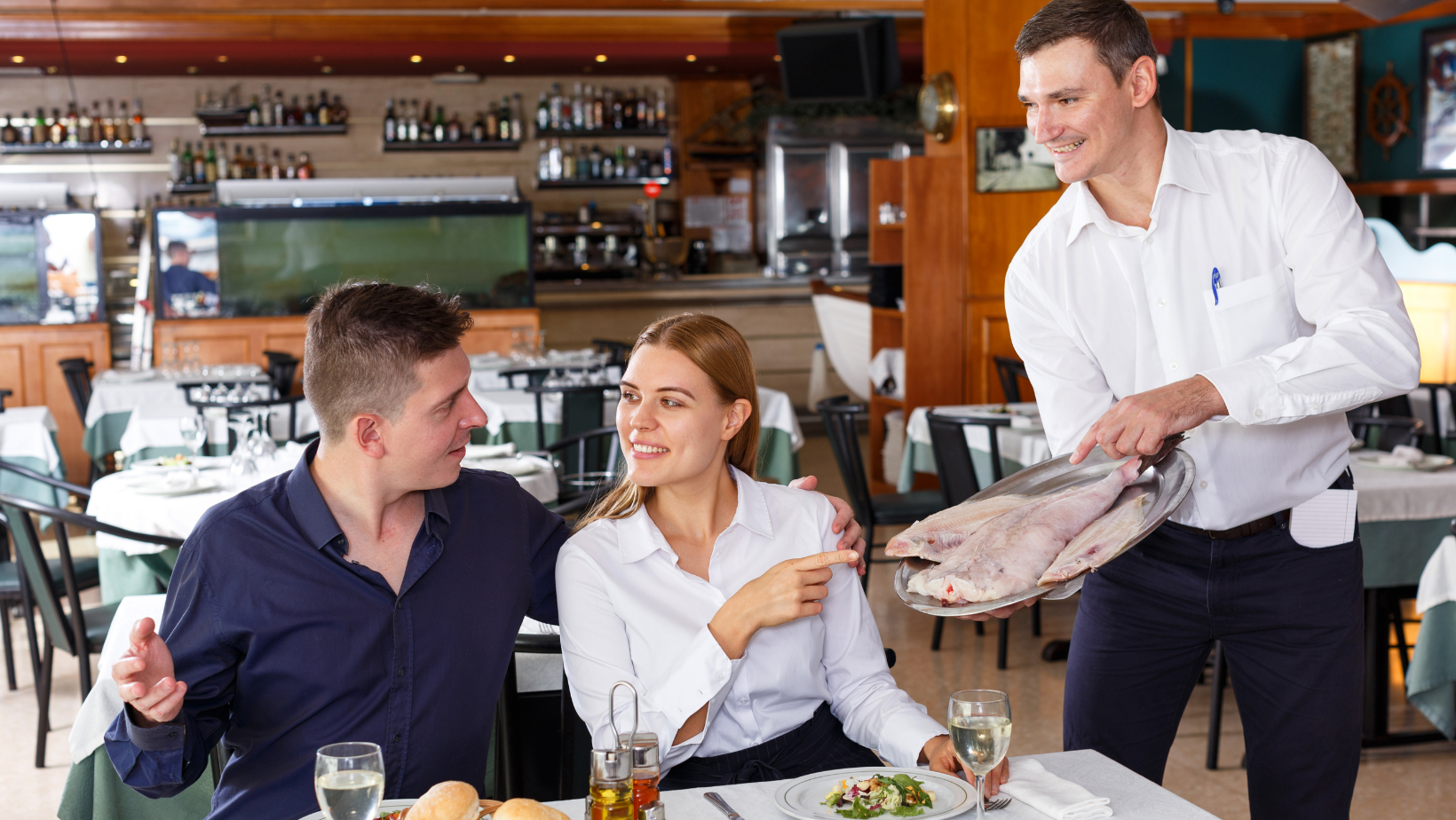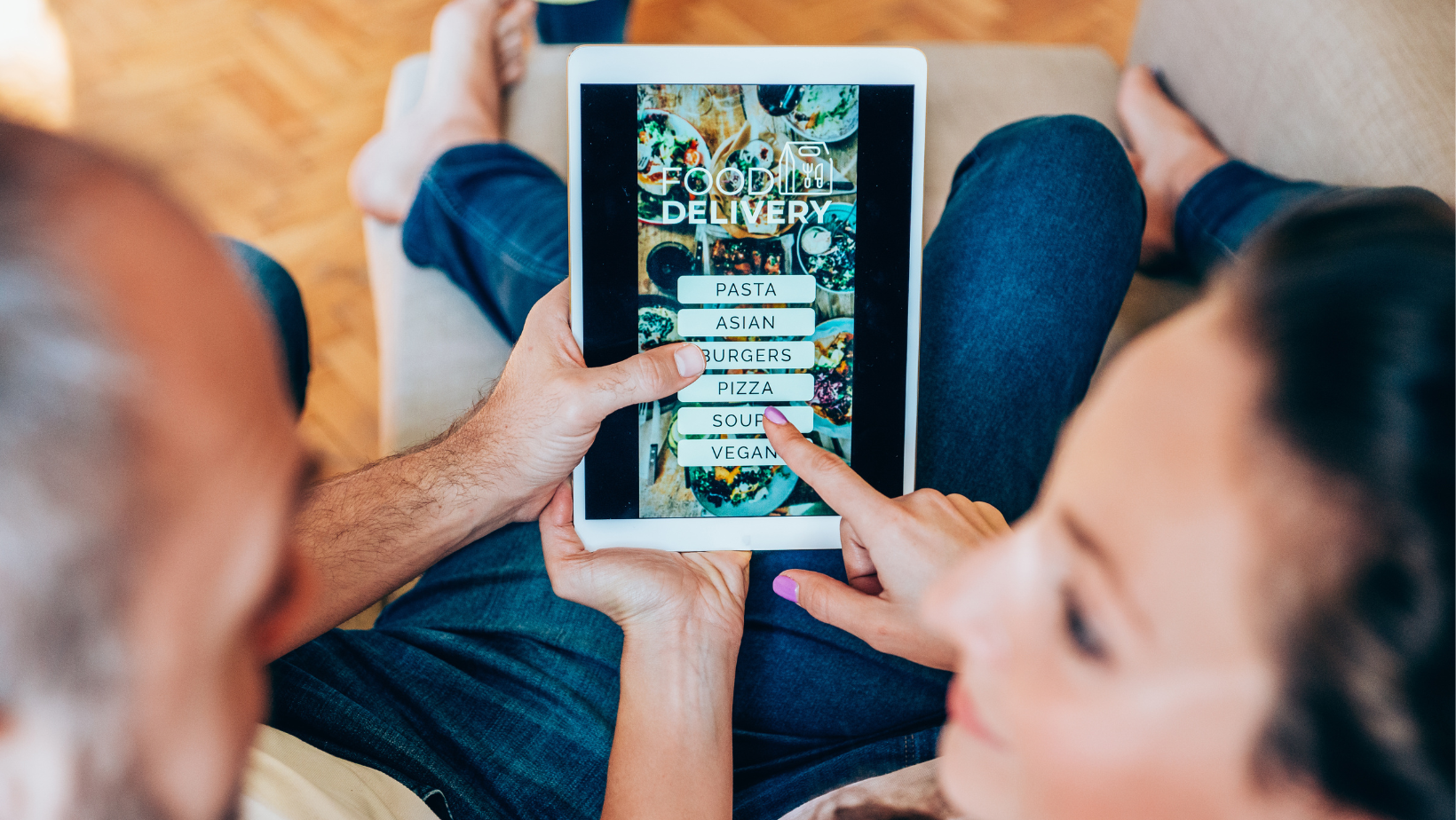
Superior customer service and delicious food can lead to happy customers. But even the happiest customers can be persuaded to order more. With the holiday season in full swing, your customers are getting bombarded with messages convincing them to spend, spend, spend. To break through all the holiday noise, you need to find more effective ways to communicate with your customers, both in-house and online, to increase sales as the year comes to an end. One technique is suggestive selling.
Suggestive selling is a communication technique and sales tactic that not only offers ideas to your guests and elevates their experience but can help you boost your bottom line by up to 30%. Suggestive selling helps deliver value and build brand loyalty as well—a win-win for your restaurant and your guests.

What is suggestive selling?
“Would you like to see the dessert menu?” is not usually enough to make customers open their wallets wider. These days, as consumers are becoming savvier and budgets are becoming tighter, your staff need more skills than just asking. This is when suggestive selling techniques in restaurants can step in.
By pitching menu items properly, wait staff can motivate diners to spend more and boost basket sizes. But it’s not just what they say, it’s how they say it that matters.
Suggestive selling involves recommending additional menu items that are different from the ones they ordered or would typically order, in an effort to boost basket size. The overall goal of suggestive selling is to increase the customer’s total purchase amount and, ultimately, a restaurant’s revenue.
The key to suggestive selling is to be knowledgeable about the menu offerings, perceptive about how and when the recommendation is delivered, and that it is genuine. Suggestive selling is successful when a customer not only orders what your server recommends but when they feel it made their dining experience better.
Suggestive selling can be carried out by your wait staff as well as through your restaurant’s online ordering system. For online ordering options, personalizing your website’s communication makes the customer feel like they are being taken care of. Using data with your guest’s past orders allows you to offer suggestions online.

Suggestive Selling vs. Upselling
Suggestive selling in restaurants is similar to restaurant upselling, and the terms are sometimes used interchangeably. However, upselling specifically refers to instances where staff suggest an upgrade or add-on. While this may not always seem easy, knowing how to upsell is easier than you think. It could be as simple as encouraging guests to make their meal a combo.
Suggestive Selling vs. Cross-Selling
Another restaurant sales technique is cross-selling, which involves offering guests a different, but complementary, item in addition to what they’ve already chosen. An example of this would be recommending a glass of white wine with their tuna steak dinner or a gluten-free dessert to guests who ordered a gluten-free pizza.
Suggestive selling, upselling, and cross-selling all put the needs and wants of the customer first. This approach sets these sales tactics apart from less personalized methods such as promoting the most profitable dishes on your menu to everyone that visits your restaurant or website.

Benefits of Suggestive Selling for Restaurants
-
Brand Loyalty
73% of consumers say customer experience influences their loyalty to a brand, and when it comes to a great experience, it’s the little things that count. When you impress your guests with a great meal, you improve their overall experience at your restaurant.
Happy guests lead to repeat business, great reviews on social media, and word-of-mouth recommendations. Maintaining a reputation for outstanding service and making great menu recommendations through suggestive selling are essential tools for keeping customers happy and creating a loyal following.

-
Employee Retention
With industry turnover rates in the food service industry still at a record high, employee retention is critical, so keeping your staff happy should be a top priority.
One of the best ways to keep your crew satisfied is by empowering them to increase their check sizes and their tips. With proper training and motivation, your servers can reap the benefits of this selling technique.
-
Larger Check Sizes and Increased Revenue
Though suggestive selling might only increase each guest’s bill by a small amount, the cumulative results can amount to a big revenue boost that can equal as much as a third of your existing revenue.
-
Drives Repeat Business
Studies show that it can cost five times as much money to attract a new customer than to keep current ones happy and coming back. Suggestive selling not only helps your restaurant make money, but it also helps you save money by driving repeat business.

Suggestive Selling Techniques for Restaurants
Play Matchmaker
Servers should be well-versed in your menu and have a keen understanding of which dishes have similar flavor profiles so they can make helpful suggestions to guests.
Having this expertise helps make suggestions feel natural and unrehearsed and helps establish your restaurant’s reputation for superior service and having a knowledgeable front-of-house crew.
Ask Questions
Asking the right questions has two benefits. First, when your staff asks your diners about their taste preferences, dietary needs, or their life in general, it demonstrates interest and reinforces your commitment to the customer experience. Taking the time to engage in conversation shows that your employees aren’t simply worried about their tips.
Secondly, asking questions is a great way to gather useful information about your guests straight from the source. In fact, studies have shown that even simply asking a guest if they’d ever been to your restaurant before can boost sales by up to 16%. Asking your customers about their beverage preferences and favorite desserts or min dishes helps your servers make personalized selling suggestions.
Create a Restaurant Loyalty Program
Not only is it more cost-effective to retain an existing customer than to acquire a new one, but existing customers are often more valuable to a restaurant’s bottom line. Creating a restaurant loyalty program can encourage your guests to dine with you 20% more often and spend 20% more than they would if they weren’t part of the program.
Loyalty programs are also popular among diners because the more they spend, the greater rewards they earn. Loyalty programs present an ideal opportunity for suggestive selling. Servers can recommend items that may be a bit pricier but offer higher rewards points to your guests.
For your off-premise customers, this feature can be built into your online ordering system as well so your guests can earn more points on your star takeout and delivery items.
Use Tech
Mastering suggestive selling techniques also includes understanding how to leverage your tech to help you increase revenue. By adding prompts to your point of sale (POS) system, your staff will be reminded to suggest items that guests may not have thought about.
POS systems can also take suggestive selling straight to your diners. Servers can show a photo of a menu item to entice your guests to make room for dessert. Mouthwatering images on your POS and website are great tools for your staff and your own website to make suggestive selling a breeze.
For counter-service restaurants, self-ordering kiosks can automatically prompt guests with options they might not have considered or suggest different variations and additions to their order.
Personalize Offers
Leveraging data enables you to create guest profiles that include food and beverage preferences. Each time a guest dines with you or visits your website, your server or online menu can make a personalized suggestive selling recommendation based on the guest’s profile. If a guest ordered a taco last time, suggest a pricier combo taco meal, for example.
Use data to recognize special occasions as well. If your guest visits on their birthday, surprising them with a free dessert is a great way to build customer loyalty.
Tailoring your suggestive selling approach to each guest is an excellent way to impress your customers and increase basket size.

Above All, Make Sure Your Staff Knows Their Stuff
Nothing stops rapport building like an uneducated server. To make a suggestive selling strategy successful, your team needs to be trained and well-prepared. Set your team up for success with suggestive selling by taking the time to make sure they have a deep understanding of your menu, and that they’ve sampled most of the items.
This could mean offering your team time during their shift to study your menu. If you have a brand new item, selection of items, or holiday specials, give staff time to sit in the break room and study the menu. Remember, this is profit building and you need to invest in your staff to reap the benefits.
Some savvy restaurants make a “Menu 101” step part of the onboarding process. This involves giving new staff your menu with ingredients and prices, having them read and get to know the menu, then giving a quiz before they start working. This is a great way to be assured that your staff knows your product inside and out— the key to successful suggestive selling.

To make suggestive selling work, educating your staff is essential. Make sure your staff is well-versed in the following selling techniques.
-
Wait staff must know the proper pronunciation of each menu item and be able to describe the taste, explain the preparation, and provide answers to any questions a guest might have.
-
Staff should be able to name and explain the ingredients.
-
It helps to take notes of the parties’ wants and needs, including allergies, special diets, and food preferences. Over time, servers might get to know a guest’s information by heart, but encouraging them to take notes, either in a notebook or on their phone, can prove invaluable.
-
Train your team to suggest replacement options for out-of-stock items.
-
Your staff should always suggest side dishes, beverages, desserts, and add-ons like cheese, fried onions, caramelized mushrooms, or your restaurant’s homemade special sauce.
-
It’s important that servers know the price of items before suggesting them. There’s nothing worse than a server going on and on about a special and not knowing the price off the bat if asked.
-
Train wait staff to utilize tech to showcase photos of suggested items. Instead of bringing a tray of desserts to the table, the server can hand the guest an iPad with mouthwatering images of your dessert options.
-
Train staff to use eye-catching adjectives like organic, new, freshly prepared, made-to-order, chef specialty, and refreshing.
-
Once the guest is convinced to try one of the suggested items, train your staff to reassure them that they made an excellent choice (like they came up with the idea on their own.)

Make it Fun
Hold a taste-testing or menu-sampling event for your staff. Not only will this act as a morale booster, but it will give your crew first-hand knowledge about the menu items, making suggestive selling much more genuine. Customers are prone to taking suggestions from friends or social media when trying a restaurant. When servers can honestly say they’ve personally tried the salmon or the chef’s new red sauce, for example, is an invaluable tool.

Suggestive Selling Techniques for Delivery
Design a Minimum Viable Online Menu
Using menu engineering, create a minimum viable Menu that features just the items you want to sell. Use design techniques like showcasing your best sellers or daily specials in the top right section of your online menu. This design technique can encourage guests to choose dishes they might not have considered, instead of immediately selecting what they had originally intended to order.
Drop-Down Menu to Offer Suggestions for Meal Pairings
When a guest orders a main dish, your online menu can automatically “suggest” a side dish by creating a drop-down menu that lists items that would pair well. If a customer orders a burger, for example, create a suggested drop-down menu that includes fries, onion rings, and a side salad.
“Don’t Forget” Button
Add a “Don’t Forget” drinks, sides, and desserts button that will pop up just before checkout.
Use reviews to your advantage
Positive reviews can be great tools for suggestive selling. Use customer quotes on your menu to prompt visitors to try your star menu items.

Take Away
Communicating with your customers in an honest, transparent, and genuine way can make your guests happy, increase customer loyalty, and boost your bottom line.
Using sales techniques like suggestive selling is a useful tool to help break through the holiday season noise and elevate your guest’s experience. Though suggestive selling is not used to convince new customers to visit your website or your establishment, it is an invaluable tool to keep them coming back, which is worth its weight in gold.

By Eileen Strauss
